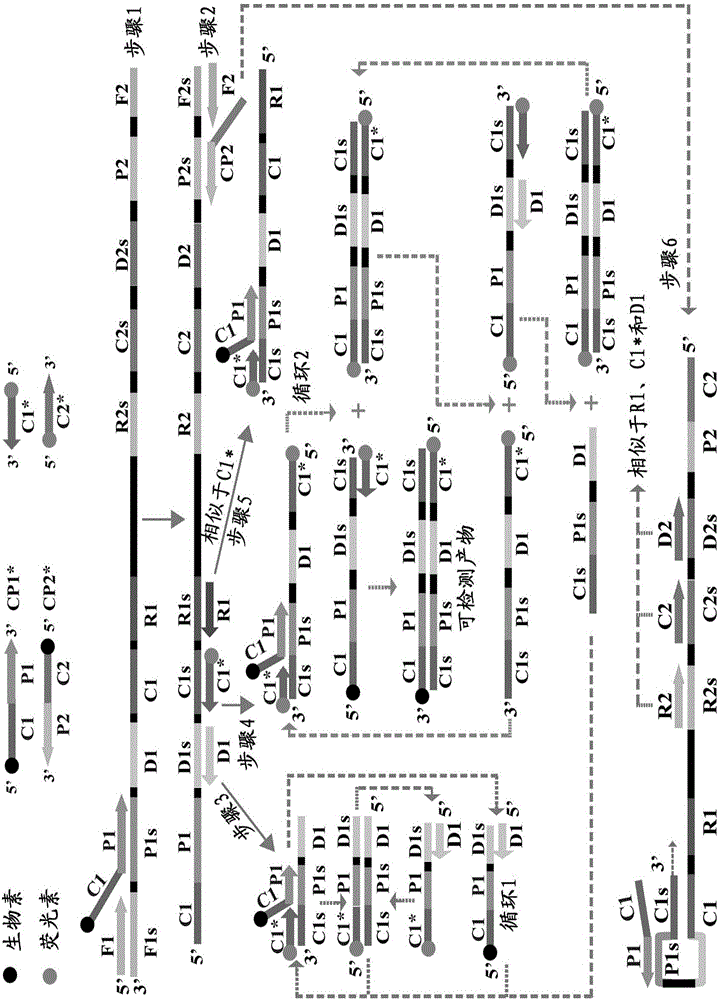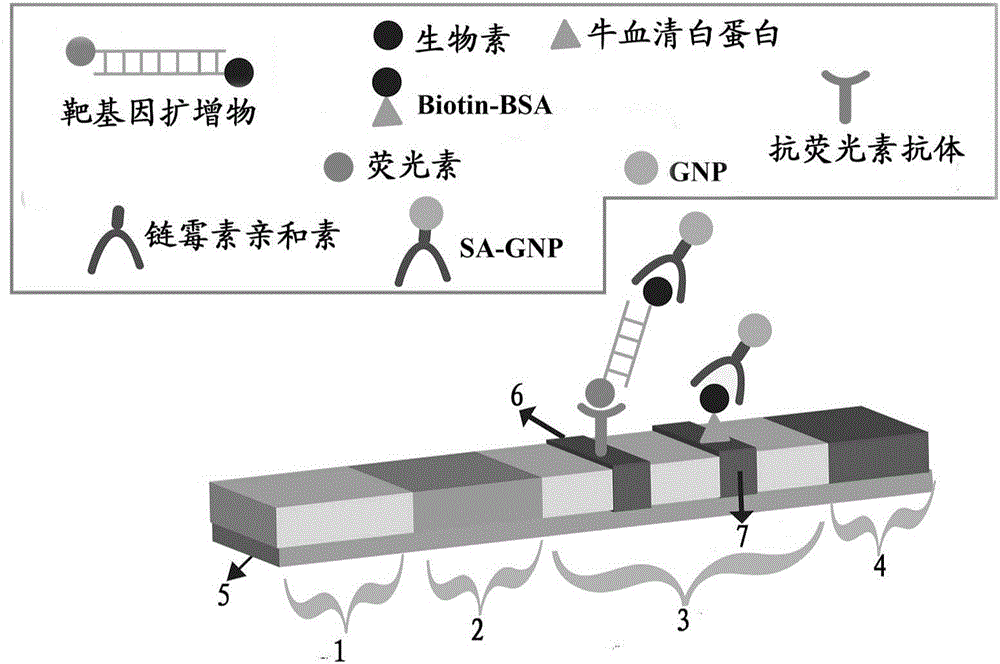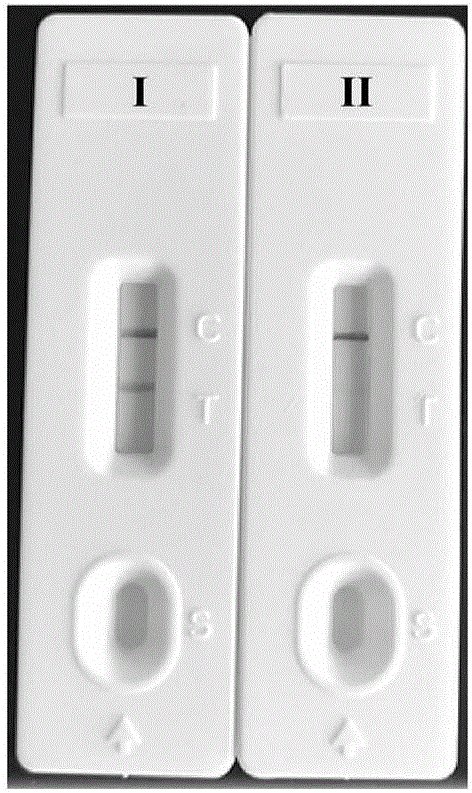Method for detecting vibrio parahaemolyticus through multiple cross amplification in combination with gold-nano biosensing
A technology of biosensing and cross constant temperature amplification, applied in the field of detection of Vibrio parahaemolyticus, can solve the problems of relying on reagents and complicated operation steps, and achieve the effect of fast detection speed and excellent detection sensitivity
- Summary
- Abstract
- Description
- Claims
- Application Information
AI Technical Summary
Problems solved by technology
Method used
Image
Examples
Embodiment 1
[0060] The feasibility of embodiment 1.MCDA-LFB amplification
[0061]Standard MCDA reaction system: the concentration of cross primer CP1* and CP1 is 30pmol, the concentration of cross primer CP2 is 60pmol, the concentration of displacement primers F1 and F2 is 10pmol, and the concentration of amplification primers R1, R2, D1 and D2 is 30pmol, The concentration of amplification primers C1* and C2 is 20pmol, Betain 10mM, MgSO4 6mM, dNTP 1mM, 12.5μL 10×BstDNA polymerase buffer, 10U strand displacement DNA polymerase, 1μL template, add to deionized water to 25 μL. The whole reaction was kept at 65°C for 1 hour, and the reaction was terminated at 85°C for 5 minutes.
[0062] After MCDA amplification, three detection methods are used for MCDA amplification discrimination. First, visual dyes (such as HNB reagent, naphthalene hydroxyphenol blue visual reagent) are added to the reaction mixture, and the color of the positive reaction tube changes from purple to blue. The negative r...
Embodiment 2
[0066] Embodiment 2. measure the optimal reaction temperature of MCDA technology
[0067] Under standard reaction system conditions, the DNA template and corresponding MCDA primers designed for Vibrio parahaemolyticus were added, and the template concentration was 10 pg / μl. The reaction was carried out under constant temperature conditions (60-67°C), and the results were detected by a real-time turbidimeter, and different dynamic curves were obtained at different temperatures, see Figure 4 . 61-64°C ( Figure 4 B-E) are recommended as the optimal reaction temperature for MCDA primers. In the follow-up verification of the present invention, 62° C. was selected as the constant temperature condition for MCDA amplification. Figure 4 It represents the temperature dynamic curve of MCDA primers designed for the detection of Vibrio parahaemolyticus against the toxR gene sequence.
Embodiment 3
[0068] Embodiment 3.MCDA-LFB detects the sensitivity of single target
[0069] After the standard MCDA amplification reaction was performed using the serially diluted genomic DNA of Vibrio parahaemolyticus, the LFB detection showed that the detection range of MCDA-LFB was 10 ng-10 fg, and red lines appeared in the TL and CL regions of LFB ( Figure 5A ). When the amount of genomic template in the reaction system was reduced to below 10fg, the LFB only appeared a red line in the CL area, indicating a negative result (Figure 5A4-A5). Figure 5A Use LFB to visually read the MCDA amplification results; Figure 5A1 to A5 indicate that the template amounts of Vibrio parahaemolyticus are 10ng, 10pg, 10fg, 1fg, and 0.1fg, and A6, A7, and A8 indicate Enterococcus faecalis (10pg), Chi Shigella template (10pg), blank control (1 microliter double distilled water).
[0070] In order to further verify the sensitivity of MCDA-LFB in detecting Vibrio parahaemolyticus, three other detection m...
PUM
 Login to View More
Login to View More Abstract
Description
Claims
Application Information
 Login to View More
Login to View More - R&D
- Intellectual Property
- Life Sciences
- Materials
- Tech Scout
- Unparalleled Data Quality
- Higher Quality Content
- 60% Fewer Hallucinations
Browse by: Latest US Patents, China's latest patents, Technical Efficacy Thesaurus, Application Domain, Technology Topic, Popular Technical Reports.
© 2025 PatSnap. All rights reserved.Legal|Privacy policy|Modern Slavery Act Transparency Statement|Sitemap|About US| Contact US: help@patsnap.com



